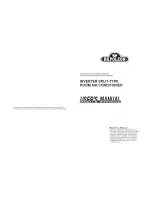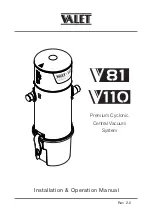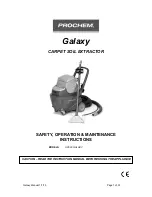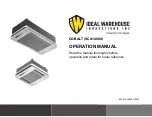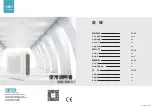
PROBLEM
PROBABLE CAUSE
REMEDY
Unit does not function
correctly. Power switch
ON and performance
indicator light and
motor are OFF.
Main breaker or fuse.
Check breaker or fuse and reset or replace if necessary.
Remote switch off.
If equipped with a remote switch ensure it is turned on.
Wiring or plug improperly connected.
Check wiring or if plug is inserted and receptacle is powered.
Cover not closed.
Close cover and slide back on hinge.
Defective power switch.
Check power switch for continuity with ohmmeter. Replace if defective.
Defective safety interlock.
Open cover and press safety interlock with a screwdriver. If lights come
on, check if interlock bracket is bent.
Unit does not function
correctly. Power switch
is ON, motor is
operating and
performance indicator
light is OFF.
Short in cells due to:
1. Broken ionizing wire.
2. Large particles wedged between cell plates.
3. Cells washed recently and are still wet.
4. Cell end plate insulator is dirty or damaged.
5. Cell plates are bent.
1. Remove wire or wire fragments. Replace.
2. Shake large particles out or wash cell.
3. Allow cells to dry completely.
4. Clean or replace end plate insulator.
5. Straighten plates with pliers.
Defective performance indicator light.
Determine whether high voltage is present by testing power board. If
voltage is present, replace indicator light.
Defective power board.
(Check power board with cells removed)
Adjust high voltage potentiometer on power board counter-clockwise. If
high voltage is not present check transformer and switches. Replace
power board if 24 V is present to power board.
Off board 24 V transformer is not working.
Verify output of transformer. Replace if necessary.
Defective power switch.
Verify output of switch. Replace if necessary.
Unit does not function
correctly. Power switch
is ON, motor is not
operating and
performance indicator
light is ON.
Defective power switch.
Check power switch for continuity with ohmmeter. Replace if defective.
Defective speed selector switch.
Check switch for continuity with ohmmeter. Replace if defective.
Defective fan motor.
Test motor and replace if defective.
Cell makes loud hissing
noise or causes radio
interference.
Internal cell contacts are not touching plates.
Test contacts and repair.
High voltage copper contacts not making good
connection on cell.
With needle-nose pliers, gently pull contacts down or replace contacts.
Cells arcing excessively
(performance indicator
light ON or flashing).
Cells wet from washing.
Allow cells to dry completely.
Particles lodged in cell or broken ionizing wire.
Wash cell. Shake particle out of cell. Replace wire, if necessary.
Cell plates are bent.
Remove cells and adjust to original spacing using needle-nose pliers.
Voltage is too high.
Adjust high voltage potentiometer on power board clockwise.
High voltage wires are on wrong copper contact. Reposition high voltage wires on proper contact (see Fig. 5).
Internal contact on cell out of alignment.
Realign cell contact.
Cells arcing excessively
at top of cell near
copper contacts (power
light and performance
indicator light ON).
Copper contact on high voltage contact board is
broken or bent upward.
If possible, pull down contact with needle-nose pliers or replace
contact.
Cells not collecting dirt
(performance indicator
light ON).
Arrow on cells not pointing towards fan motor.
Reposition cell handle and place cell in properly.
Not enough voltage on collecting cells.
Adjust high voltage potentiometer counter-clockwise on power board.
Ozone odor
Cell plates are bent.
Straighten with needle-nose pliers.
Loose or broken ionizing wire.
Replace wire.
Dirty cells.
Wash cells.
Incoming voltage is higher than 120 V.
Adjust high voltage potentiometer clockwise on power board.
Air Cleaner is oversized for room.
Use correct size of Air Cleaner.
Room is extremely dry.
Repair or install central humidifier.
Table 1
—
TROUBLESHOOTING GUIDE
9













